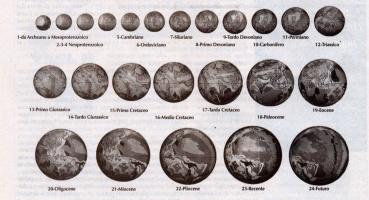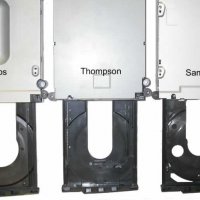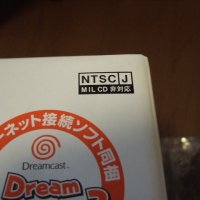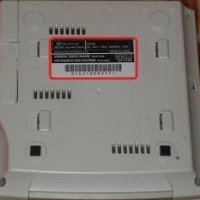A discussion of COMPATIBILITY: Expanding your system and exploring new worlds
A lot of ATARI users are concerned about the compatibility of their software with our high resolution true color boards.
Compatibility is a key issue when attempting to improve the system performance through hardware upgrades. This is especially true for graphic cards. The ability to expand a system greatly depends on the way how the operating system handles I/O operations (like producing an output on the screen), additional hardware and the accompaning software drivers.
Fortunately, the ATARI computers feature GEM. GEM consists of several software layers, each providing an increasing freedom and independence from the underlying hardware components.
One of these GEM layers is called VDI (Virtual Device Interface).
By exchanging the existing ATARI specific VDI portion of the GEM environment, the ATARI system can accommodate a wide range of other display devices.
Therefore we have not only tried to develop a unique and powerful graphics expansion board but also a VDI driver that emulates the original, which maintains a high degree of compatibility while extending the capabilities according to the provided hardware features.
Considering these facts, all programs can be divided into three groups:
- a) programs that use the VDI as the only interface to produce ANY output on the screen.
- b) programs that seem to require one of the original Atari modes to run properly.
- c) programs that use the VDI AND CUSTOM ROUTINES to update the display.
Case 'a' programs show little or no difference when used in conjunction with the CyReL M16-1280 boards. Almost all major software titles can be found in this group. These applications allow the user to take advantage of e.g. higher resolutions (in some cases even higher refresh rates), more colors and sometimes even faster output speeds. Fortunately most of them are designed according to the GEM and ATARI guidelines and therefore can be used instantly without any additional system modifications.
Case 'b' programs are a little bit more difficult to deal with. Most of these programs use the information of the Getrez (XBios4) operating system call to find out more about the state of the display. Instead of examining the (correct and available) informations provided by the VDI some programmers seem to prefer the XBios call. This can lead to some surprising results:
THE CALL CAN ONLY RETURN A CODE TO DESCRIBE THE GRAPHICS MODE WHICH IS CURRENTLY BEING USED BY THE BUILT-IN ATARI VIDEO CIRCUITRY!
Original intention: a program wants to find out if the current screen resolution supports all the requirements (e.g. at least 640x400)
Effect: Some programs refuse to run even when using a sufficiently high resolution because it might be that the ATARI VIDEO CIRCUITRY is operating in a lower mode, and thus the XBios call returns an unacceptable value. Note that we support a 'two monitor' configuration, consisting of our graphics card connected to one monitor and the simultaneous use of the screen output generated by the Atari connected to a second monitor. WE DO NOT IMPOSE ANY RESTRICTIONS WHATSOEVER regarding the mode in which the Atari must be placed. Our cards even allow 'multi-monitor' setups with up to four CyReL cards per single system + the Atari output.
Patch: We provide custom XBIOS driver that can be installed plus an accessory that allows the user to define the return value of the XBios call to eliminate about 90% of the described problems.
Nonetheless we would like to urge EVERY developer to adopt the VDI method for any inquiries regarding screen size and/or screen attributes!
Further we have to add all programs which take advantage of certain hardware register layouts and ATARI specific hardware features to group 'b'. The use of such features prevents these programs from being used with a graphics card. A number of monochrome-only drawing programs and almost all of the games and entertainment software titles fall into that category.
This is not limited to CyReL cards and applies to all system expansions as long as they are not specifically supported by those programs.
Group 'c' programs can prove to be the hardest to adapted by the user to run on any graphics card, since some of the screen output may end up at the wrong place and most likely in the wrong format. There is little the user (or we) could do to correct this problem, which means that in almost all cases the developer or author of the program must re-write at least a part of the code.
The only way to prevent such problems is to fully support the VDI interface from the very beginning. With the continuous development and introduction of new ATARI systems, it represents the only way to maintain compatibility with new ATARI features and ultimately all third party products.
Further it is the only way to guarantee the portability of programs in case the user intends to upgrade to a bigger system. Obviously there will be future developments that cannot be forseen and thus will remain unsupported by today's software titles. But we can at least do our share to improve flexibility and user-friendlyness for years to come.
This adaptation of programs is a process that has already begun and benefits all, the user, the developer and the manufacturer of e.g. the graphic boards. The developer can take advantage of new improved screen output, a higher number of on-screen colors, and not to forget new and evolving market niches. The user benefits through improvements in appearance, comfort, features and better ergonomics while the manufacturer can take advantage of increasing market opportunities.
We at Cybercube welcome the introduction of the Falcon. We see it as an interesting and important addition to the Atari product line. It will help create a market that is increasingly oriented towards graphic and video applications. Furthermore it will help educate the user base in regards to the requirements of modern desktop video technology. This aspect should not be underestimated.
It is our goal to provide a quality product for the professional user or the serious home user. With on-screen resolutions of e.g. 2048x1024 in 256 colors, refresh rates that can go beyond 100 Hz, real (no less than 16 Million colors) True Color capabilities with resolutions of e.g. 640x480, 800x600, 960x512 or even 1024x512 and virtual resolutions up to 4096x4096 (non-interlaced) we do not anticipate any problems regarding the evolving Falcon market.
Through the additional expansion capabilities of the cards (which is for instance being utilized by the CyReL VidiMix8 desktop video module) we think that we have a very promising platform to offer. A platform that easily integrates into the ever expanding Atari environment.
But we are still convinced that there is a need of a co-operation between users, software-developers and hardware manufacturers in order to make this concept work. We hope that our contributions might help to establish the Atari computers as a viable alternative to the popular systems in the DTP, CAD and desktop video markets.
In this spirit, I would like to thank you for your interest in our products.
Best regards,
CYBERCUBE RESEARCH LTD.
M16-Product Coordinator
Please feel free to write, e-mail or fax us any comments or suggestions. We are interested in your feedback and will do our best to make needed improvements on a timely basis.



























